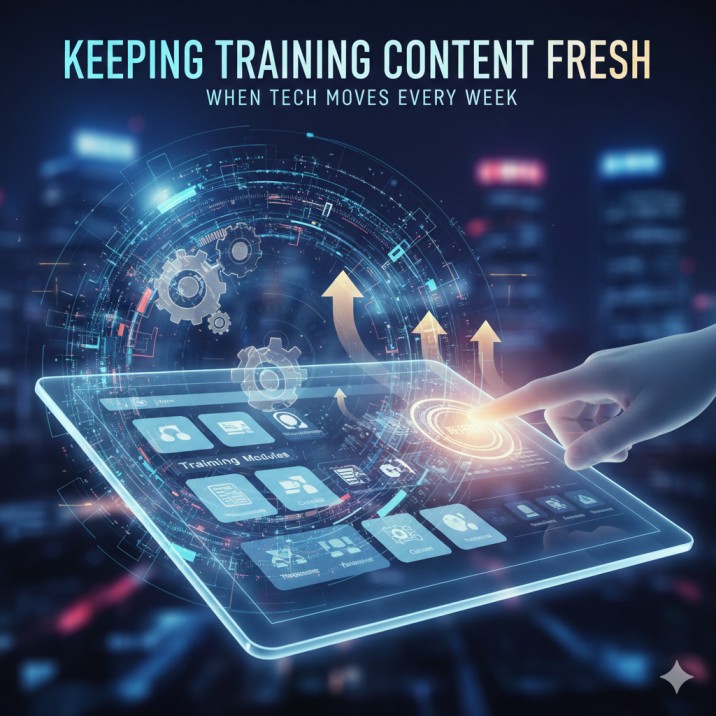Infrastructure You Don’t Have to Build
Want to build a super smart AI training system?
Instead of spending all your time and effort building the entire infrastructure yourself, the smartest move is to use parts that already exist and were built by others. This is like buying pre-built LEGO sets instead of making every single LEGO block from raw plastic!
By choosing to partner with companies that offer Infrastructure as a Service (IaaS), you can rent or use their powerful computer systems, storage, and networks. This lets you skip constructing three big, complicated infrastructure layers. Think of these layers as the engine, the fuel tank, and the wheels of your robot—it’s way faster to just get them ready-made!
1. Scalable Storage Solutions
Your AI models need high performance, which a traditional system can’t provide. Instead, use scalable storage infrastructure that you don’t need to build from scratch.
These figures imply that raw storage is the need for the next generation, where massive-scale storage is the only solution.
Two sub-types of storage you don’t build
- Object Storage and Distributed File Systems: For unstructured data (images, video, model weights, logs), you can partner with providers offering S3-compatible object storage optimised for AI workloads. One example is the solution from CoreWeave, which offers up to ~7 GB/s per GPU read throughput and multi-cloud access without manually engineering data replication.
A university AI research lab wants to fine-tune large-language models using massive image sets. Instead of building petabyte-scale on-campus storage, they tap a partner’s multi-region object store pre-configured for high-throughput GPU access.
- Vector Databases: When your ML workflows generate embeddings (for search, retrieval, and recommendation), you need specialized storage/queries. Rather than building your own, you consume a managed service for vector storage and retrieval.
A training institution offering hands-on AI labs partners with a vector DB provider so students can upload embeddings and run similarity queries without installing a complex stack.
2. Software and MLOps Platforms
Rather than assembling fragmented tools piece by piece – versioning, pipelines, orchestration, monitoring- you can consume a unified platform and skip building the bulk of the stack.
- Another puts the talent/operational complexity of ML model operationalization as a major barrier.
This implies that teams increasingly prefer not to build the infrastructure themselves.
Key components you don’t build
- Machine Learning Frameworks & Libraries: Frameworks such as TensorFlow, PyTorch, and scikit‑learn are open, but the surrounding integrated stack (with authentication, deployment, and monitoring) is heavy to build.
A corporate training partner offers labs where students iterate models on pre-existing frameworks and backend pipelines, rather than installing everything themselves.
- Orchestration & Management Platforms: Tools like Kubeflow built on Kubernetes, with auto-scaling, logging, experiment tracking, and deployment baked in.
A university AI lab uses a managed Kubeflow-on-cloud offering rather than setting up Kubernetes clusters, configuring pipelines, and building dashboards.
- MLOps Tools: Versioning, experiment tracking, deployment pipelines, and drift monitoring—these are now often delivered as a service (SaaS).
A training institution partners with a vendor that provides model registry and deployment services so students can focus on modelling rather than infrastructure plumbing.
What AI CERTs offers
Our ATP program includes modules where trainees use MLOps platforms (rather than building from scratch). Partner institutions: embed our curriculum, expose learners to real-world platforms, and skip the overhead of creating the stack in-house.
3. Operational & Management Overhead
The clearest “infrastructure you don’t have to build” is the invisible one: physical data centre, cooling, staffing, compliance, and scaling. When you partner, you offload all of these.
- Running your own data centre for AI workloads means managing power, cooling, networking, physical security, racks, servers, etc. That’s a cost centre and distraction.
- Meanwhile, to deploy AI at scale, you’ll want to expand or contract compute and storage dynamically—with cloud or partner services, you don’t chase physical procurement.
- Compliance (GDPR, HIPAA, etc.) and security become infrastructure burdens when you build. Many partner platforms offer built-in encryption, certifications, and audits.
- Specialist skill sets (cloud architecture, GPU/TPU resource engineering, and data engineering) are scarce; buying managed services reduces the need to hire all of them.
A private training academy wants to launch an AI lab for enterprise clients. Instead of building a bespoke infrastructure, they partner with a cloud provider with compliant infrastructure and focus their curriculum on modelling and deployment of AI rather than hardware setup.
A university department wants to offer an “AI for Health” research track. They partner with a compliant cloud AI lab service (HIPAA certified) rather than building their own secure data center wing.
Why this matters?
When you build your own infrastructure, you incur capital expense (CapEx), delays, operations burden, and risk. When you don’t build and instead consume partner infrastructure, you gain speed, scalability, lower risk, and focus on your core competency: building AI models, training talent, and driving outcomes. The combined storage + software platform + operational overhead bypass creates a strategic lever.
Moreover, as the storage and MLOps markets scale (see above), the ecosystem of partner services strengthens. For example, the AI-powered storage market is projected to rise from USD 22.9 billion in 2023 to USD 110.68 billion by 2030. This means infrastructure services will become more commoditised and accessible, so using them instead of building them becomes the smarter path.
If you represent a university, college or training institution, consider becoming a partner of AI CERTs ATP programme. By embedding our curriculum, you’ll:
- Offer students hands-on experience with consumption of partner infrastructure rather than building from scratch
- Prepare graduates for real-world AI workflows (storage, MLOps, operations)
- Access our training and certification track while leveraging existing infrastructure partners
- Gain a competitive training offering for your institution
Get in touch with AI CERTs to discuss partner terms, curriculum adoption, and co-branded training. Let’s focus on what matters—talent, outcomes rather than reinventing infrastructure.
Recent Blogs

FEATURED
Keeping Training Content Fresh When Tech Moves Every Week
November 27, 2025
FEATURED
How to Build a Scalable Business Pipeline as an Authorized Training Partner
November 27, 2025
FEATURED
The Power of Data Analytics in Authorized Training Partner Operations
November 27, 2025
FEATURED
The Impact of Authorized Training Partners on Regional Employment Growth
November 25, 2025
FEATURED
How Authorized Training Partners Can Develop Local Instructor Networks
November 25, 2025

